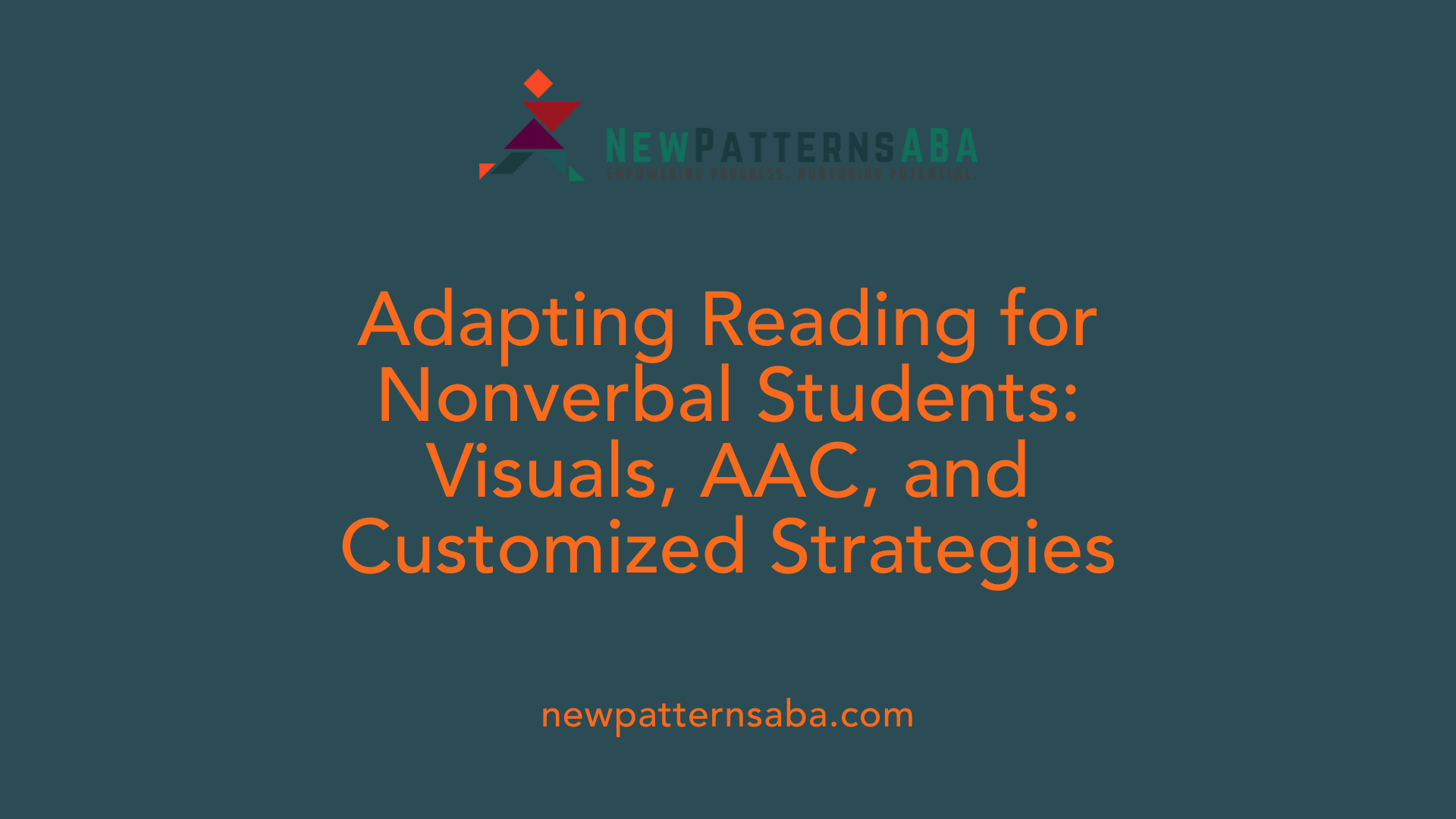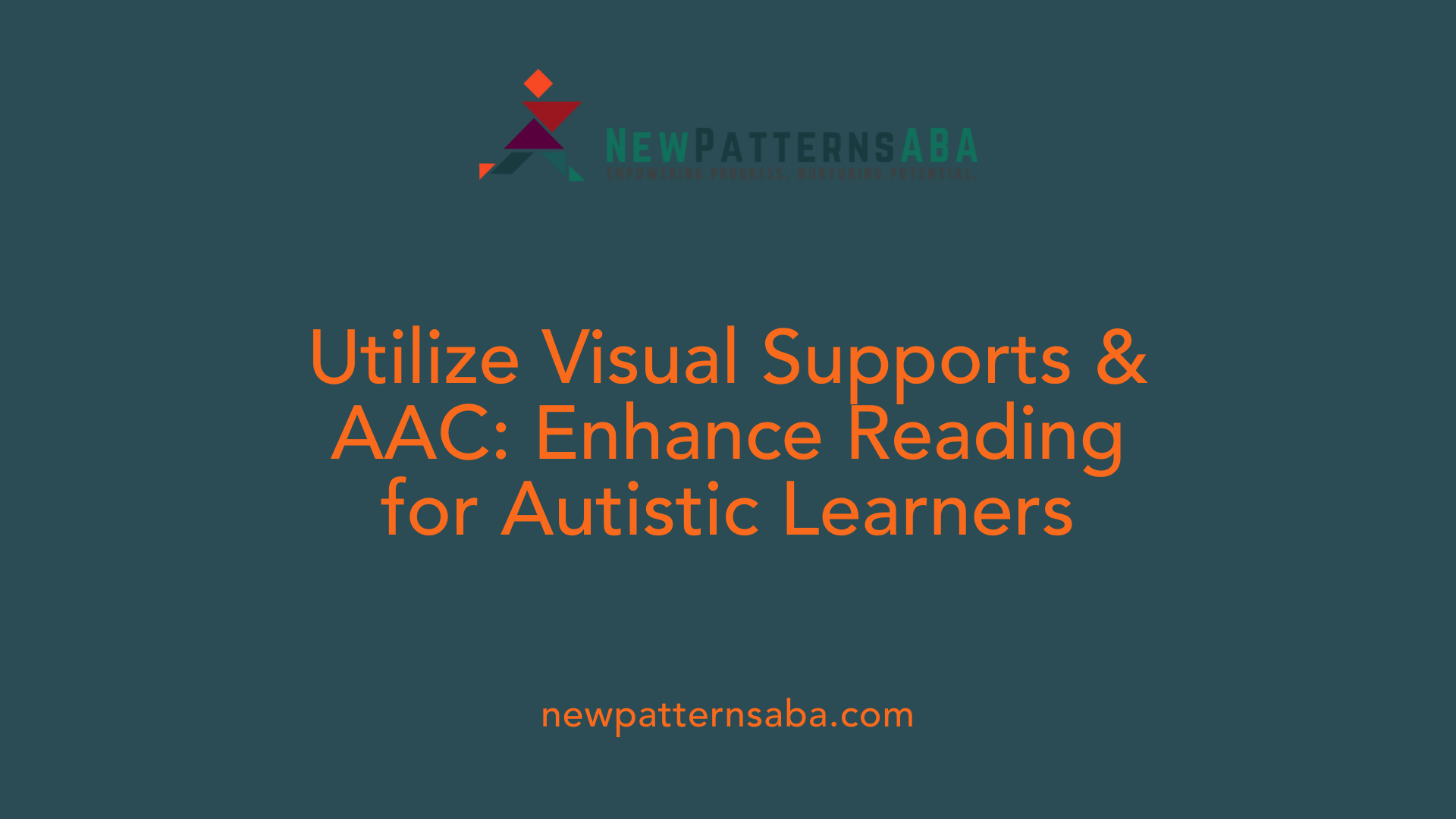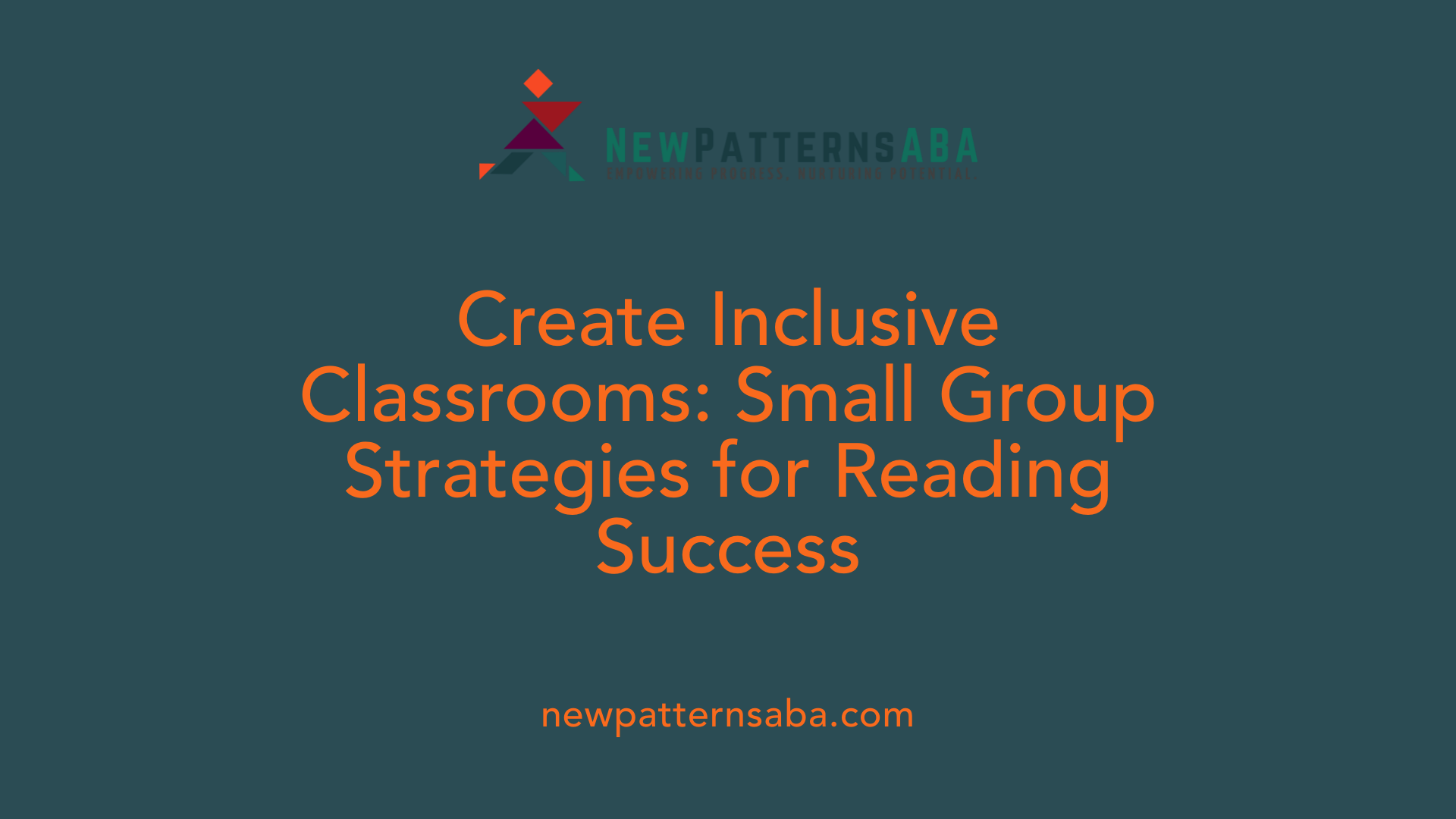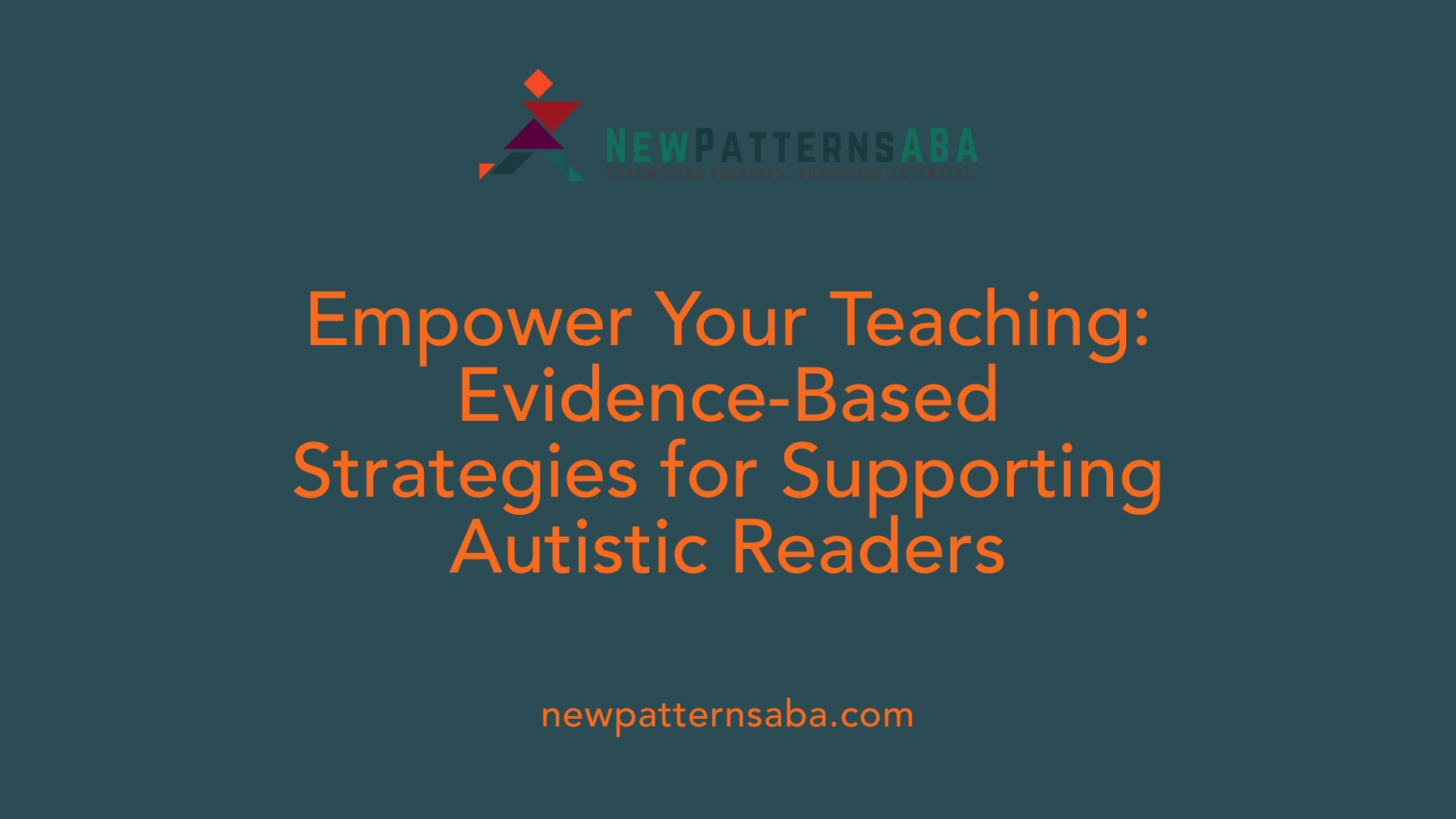Enhancing Literacy and Engagement for Autistic Learners in Small Groups
Creating Inclusive Reading Environments for Autistic Students
Supporting autistic students in reading groups requires a comprehensive understanding of their unique needs, strengths, and communication styles. Effective support involves implementing evidence-based instructional strategies, utilizing visual aids and assistive technologies, fostering social interaction, and designing sensory-friendly environments. This article explores research-backed approaches, practical tools, and inclusive practices that educators can adopt to facilitate literacy development, improve comprehension, and promote meaningful participation among autistic learners in small-group reading settings.
Adapting Reading Techniques for Nonverbal and Minimally Verbal Students

How can I teach reading comprehension skills to autistic children?
Teaching reading comprehension to children with autism, especially those who are minimally verbal or non-verbal, requires tailored approaches that do not rely solely on spoken language. One effective method involves matching words to pictures. Visual symbols or pictorial representations help children make connections between the written word and its meaning, fostering understanding without needing verbal responses.
Typing words and using augmentative and alternative communication (AAC) devices also play a crucial role. These devices allow children to recognize and select words on screens, enabling them to communicate and learn associated symbols, which enhances their overall literacy skills. Speech-generating devices with typing capabilities empower children to independently produce written output once they understand the relationships between symbols and words.
Following written text through adapted strategies helps reinforce comprehension. For example, using simplified texts, visual cues, or highlighted key words guides children through stories and informational content without overwhelming them. Incorporating these visual supports into regular reading routines supports their understanding and engagement.
Additional Strategies for Supporting Autistic Students in Reading
It’s important for educators to understand each child's individual needs through direct communication, such as informal interviews or surveys. Using their interests and fascinations as teaching tools can significantly boost motivation and learning.
Structured opportunities for participation, such as small group reading sessions, provide a safe space for children to practice reading skills. Consistent routines, visual supports for transitions, and sensory-friendly environments also reduce anxiety and help maintain focus.
In group settings, assigning specific roles like
Use of Visual Supports and Adapted Communication in Reading Instruction

How can educators support nonverbal and diverse communication needs of autistic students during reading?
Supporting children with autism in reading requires tailored approaches that respect their communication strengths and challenges. Visual aids, such as picture symbols, graphic organizers, and visual schedules, serve as powerful tools to facilitate understanding. These tools help students connect words with images, making abstract concepts tangible and easier to grasp.
Augmentative and alternative communication (AAC) devices offer additional pathways for literacy development. Speech-generating devices with symbol-based interfaces allow students to recognize words and associate symbols with real-world objects, fostering comprehension and independent expression.
Environmental print, like street signs, labels, and safety signs, is integrated into daily routines to promote functional literacy. Recognizing and understanding these signs empower children to navigate their surroundings safely and confidently.
Using multimodal strategies, including gestures, pointing, matching, and acting out stories, enhances engagement, especially for students who process information visually. Consistent, predictable instructions reduce anxiety, support independence, and cater to individual learning paces.
Programs such as Reading Eggs combine visual supports with oral and written stimuli, capitalizing on students’ visual-spatial strengths to build literacy skills.
To ensure these strategies are effective, ongoing teacher training and adherence to evidence-based interventions — like the use of visual supports, structured routines, and functional literacy activities — are essential. Such approaches create inclusive classrooms where all students can access reading instruction and develop essential literacy skills.
Supporting visual aids and graphic organizers
- Use of pictorial schedules to outline reading sessions.
- Graphic organizers to sequence story elements.
- Visual story maps to aid comprehension.
Employing AAC devices
- Devices with symbols and emojis for word recognition.
- Opportunities to practice typing and independent communication.
Incorporating environmental print
- Reading safety and directional signs in real-world contexts.
- Labeling classroom materials for familiarization.
Visual aids summary table
| Tool | Purpose | Example | Benefits |
|---|---|---|---|
| Pictorial schedules | Structure routines | Daily reading plan | Reduces anxiety, builds predictability |
| Graphic organizers | Sequence story elements | Story maps, story grids | Enhances comprehension |
| AAC devices | Support verbal expression | Symbol-based speech devices | Promote independent communication |
Resources and further support
Search terms like "support strategies for nonverbal and multimodal communication in autism" can lead educators to research-based techniques and current best practices. Tailoring reading instruction with these tools helps foster literacy and confidence in students with autism.
Building Engagement and Comprehension Using Interests and Routine-Based Strategies
How can leveraging student interests support reading development?
Children with autism often have specific interests or fascinations that can be powerful tools in teaching reading. Teachers should learn about each child's unique preferences through informal conversations or surveys. Incorporating these interests into reading activities—such as choosing books related to a child's favorite topic or using relevant stories—can boost motivation and make learning more meaningful.
Activities like matching words to pictures, typing words, or following written text can be adapted to suit their preferences, helping non-verbal or minimally verbal children connect with reading material without relying solely on spoken language.
What structured routines and visual supports benefit autistic students?
Implementing visual routines and structured activities creates a predictable environment, reducing anxiety and helping children understand what to expect. Visual cues, such as picture schedules or step-by-step graphic organizers, support comprehension and task completion.
Classrooms designed with sensory-friendly elements—like adjustable lighting, sensory breaks, and tools such as noise-canceling headphones—further support their comfort. These environments enable children to participate in reading activities with less stress.
How does promoting participation and social skills enhance learning?
Engaging children through turn-taking, pointing, and shared reading not only supports literacy but also develops social communication skills. Using story props or acting out parts of a story encourages interaction beyond spoken language.
Providing choices—such as selecting which book to read or deciding on activity roles—empowers children, fostering autonomy and engagement. Structuring group work with clear roles (e.g., illustrator, presenter) and expectations helps children understand social dynamics and participate confidently.
Strategies summary
| Strategy | Description | Benefits |
|---|---|---|
| Use of visual supports | Visual schedules, graphic organizers, picture cues | Clarifies routines, enhances comprehension, reduces anxiety |
| Incorporation of interests | Books and activities related to individual fascinations | Increases motivation and engagement |
| Structured routines | Consistent classroom activities with visual cues | Builds predictability, supports transition management |
| Promoting social participation | Turn-taking, shared reading, group roles | Fosters social skills, encourages participation |
| Sensory considerations | Sensory-friendly tools, quiet spaces | Improves comfort, supports focus during reading activities |
Overall, tailored, routine-based, and interest-driven approaches create an inclusive and supportive learning environment that enhances literacy and social skills for students with autism.
Effective Small Group and Classroom Strategies for Supporting Reading Development

What are best practices for creating supportive and accessible reading environments for autistic learners?
Building an inclusive classroom that fosters reading skills among autistic children requires thoughtful strategies focused on accessibility and support. The environment should minimize sensory overload by including sensory-friendly spaces, like quiet zones equipped with tools such as noise-canceling headphones and fidget toys, which help children self-regulate and stay focused.
Visual supports are essential. Teachers can use picture cards, visual schedules, and pictorial diagrams to clarify routines and help students understand what to expect during reading activities. Such tools also help children who process information visually and support their participation.
Using clear, simple language combined with visual and written instructions makes instructions more understandable and reduces confusion and anxiety. When each child’s individual needs are met, through accommodations like assistive technology or specially adapted reading materials, they can engage more fully in literacy activities.
Incorporating multi-sensory activities, such as touching textured letters or acting out story elements, can enhance engagement and retention. Connecting reading tasks to children's interests or fascinations—like stories about their favorite animals or characters—also increases motivation.
Structured routines, supported by visual cues and social stories, promote predictability and help children develop functional literacy skills with confidence. For example, using visual schedules to outline the steps of a reading session ensures children know what to expect.
Technology plays a vital role too. Adaptive tools such as reading apps like Readability can offer personalized support, keeping children engaged and encouraging independence. These resources, combined with structured, supportive routines, create a positive learning environment that helps autistic children thrive in their literacy journey.
In summary, creating effective reading environments for autistic learners involves sensory considerations, visual supports, clear communication, individualized accommodations, and engaging, interest-based activities—all within a predictable and nurturing classroom setting.
Structured routines and visual supports to facilitate learning
How does autism affect reading and engagement in group settings?
Autism can significantly influence how children participate in group reading activities. Many children with autism have strong decoding skills, meaning they can recognize and sound out words with relative ease. However, they often face challenges in understanding the content, particularly around social themes, emotions, and figurative language.
These difficulties mainly stem from issues with social communication and theory of mind, which is the ability to understand others' thoughts and feelings. As a result, children with autism may find it hard to interpret character motivations, social cues, or the deeper meanings behind stories.
In group settings, this can lead to reduced engagement. They might struggle with inference, predicting story outcomes, or grasping complex social interactions in texts. Sensory sensitivities and language processing differences can also make traditional group reading less stimulating or overwhelming.
Despite these challenges, tailored approaches can help. Using visual supports such as picture cues, social stories, and structured routines can make reading more accessible and engaging. Incorporating shared reading experiences, where children participate non-verbally through pointing or matching words to pictures, encourages involvement without requiring extensive spoken language.
Creating an inclusive environment that respects individual strengths and promotes understanding among peers can boost participation. Strategies like explicit teaching of sequencing, visualizing stories, and practicing social skills help children grasp content better and feel more connected during group learning.
Recognizing each child's unique needs and providing appropriate scaffolds are vital. This fosters not only improved literacy skills but also enhances social interaction, making group reading a more positive and meaningful experience for all students.
Strategies for supporting autistic children in group reading activities
| Strategy | Description | Benefits |
|---|---|---|
| Visual supports | Use pictures, symbols, and visual cues to aid comprehension and engagement | Clarifies meaning, reduces frustration, encourages interaction |
| Shared reading techniques | Involve children through non-verbal participation like pointing or matching words | Builds confidence and social skills |
| Social stories and cues | Prepare children with stories and visual signals about upcoming activities | Reduces anxiety, sets clear expectations |
| Clear routines and cues | Consistent structure with visual and verbal reminders | Supports predictability, easing transitions |
| Attention to sensory needs | Sensory-friendly environments, breaks, and tools like noise-canceling headphones | Prevent overwhelm, foster focus |
Supporting reading through inclusive strategies
Fostering an inclusive classroom involves adapting activities to meet diverse needs. Incorporating visual schedules, social stories, and clear routines can significantly enhance participation. By recognizing individual differences and providing tailored supports, educators can improve both literacy and social engagement for children with autism, creating a more supportive learning community.
Supporting Social Skills and Peer Interaction During Reading Activities

What are best practices for creating supportive and accessible reading environments for autistic learners?
Designing inclusive and supportive environments for children with autism involves multiple strategies that foster engagement and comfort.
One of the first steps is to reduce sensory overload by creating sensory-friendly spaces. This can include quiet areas, soft lighting, and tools such as noise-canceling headphones or sensory toys, which help children manage sensory sensitivities.
Visual supports play a crucial role. Using picture cards, visual schedules, and pictorial diagrams helps children understand routines and instructions. This reduces anxiety and provides clarity during reading sessions.
Communication is enhanced when teachers use clear, simple language paired with visual cues and written instructions. Tailoring materials and using assistive technologies, like adapted reading apps or AAC devices, ensure that each child's individual needs are met.
Incorporating multi-sensory activities and interest-based content can boost motivation and make reading more engaging. Structured routines, social stories, and predictable sequences foster confidence and independence.
Technology facilitates learning too. Adaptive tools like Readability or other assistive platforms support literacy development, improve motivation, and promote autonomous learning.
Creating such environments doesn't solely focus on physical space but also emphasizes emotional and social comfort, laying a foundation for meaningful literacy and interaction.
Teacher Training, Resources, and Evidence-Based Practices for Supporting Autistic Readers
What resources and interventions can facilitate reading development for autistic students?
Supporting children with autism in developing reading skills goes beyond traditional methods, requiring tailored resources and interventions. Visual supports, such as picture schedules, social stories, and graphic organizers, help students understand and engage with text. Specialized curricula like Edmark Levels 1 and 2, the Functional Word Series, and Reading Mastery focus on foundational skills and high-frequency words, often integrating interactive tools like task cards.
Effective interventions combine explicit phonics instruction with sight word teaching. Teachers use systematic prompting, positive reinforcement, and massed trials to reinforce learning. For example, using targeted flashcards while providing immediate feedback helps children recognize and recall words with confidence.
To promote functional literacy, resources emphasize real-life words and meaningful contexts. This includes teaching students to interpret community signs, grocery lists, and other environmental print, making reading applicable to daily life. Complementing this, comprehension strategies such as accessing background knowledge with visual aids, story mapping, reciprocal questioning, and retelling activities support understanding.
Incorporating evidence-based practices is essential. Direct instruction in decoding and comprehension, peer tutoring, and scaffolded activities—where tasks are broken into manageable steps—can significantly enhance literacy. Such approaches are supported by research and tailored to meet the diverse needs of autistic learners, ensuring they build not only decoding skills but also meaningful understanding of texts.
By utilizing these resources and interventions, teachers can create a supportive environment that enables autistic students to improve their reading skills and gain confidence in their literacy development.
The Role of Teacher Training and Evidence-Based Practices in Supporting Autistic Readers

What are best practices for creating supportive and accessible reading environments for autistic learners?
Supporting children with autism in developing literacy skills requires thoughtful classroom design and instructional strategies. First, minimizing sensory overload is essential; this can be achieved by creating sensory-friendly spaces and providing tools like noise-canceling headphones, calming lighting, and fidget toys to help children self-regulate.
Visual supports are invaluable. Picture cards, visual schedules, and pictorial diagrams help children understand routines, follow instructions, and connect written words with symbols. Simplifying language and combining visual and written instructions further reduces communication barriers and enhances engagement.
Individual accommodations are also important. Using assistive technology, such as speech-generating devices with typing features or reading apps like Readability, promotes literacy and independence. Tailored reading materials that connect with each child's interests motivate learning.
Incorporating multisensory and interest-based activities helps make reading meaningful. For example, if a child is fascinated with animals, using animal-themed story props or books can increase motivation.
Structured routines and social stories prepare children for transitions and new activities, reducing anxiety and supporting behavioral regulation.
Digital tools and adaptive resources foster inclusive learning environments. These may include interactive apps, visual supports, and explicit teaching strategies such as sequencing activities, storytelling, and inferencing exercises.
Overall, effective teacher training across multiple areas—sensory processing, visual supports, assistive technology, and inclusive instructional strategies—empowers educators to create accessible, engaging, and supportive reading environments that meet the diverse needs of autistic learners.
Fostering Literacy and Social Inclusion in Autistic Learners
Developing effective strategies for supporting autistic students in reading groups involves understanding their unique communication, sensory, and social needs. Incorporating visual supports, adapted communication methods, structured routines, and evidence-based instructional practices can significantly enhance reading comprehension, engagement, and social skills. Creating an inclusive, sensory-friendly classroom environment that values individual strengths fosters motivation and independence. Continuous professional development, utilizing targeted resources, and promoting peer interaction and social skills are essential for cultivating a supportive literacy environment. By integrating these approaches, educators can empower autistic learners to thrive in reading activities, gain functional literacy, and participate fully in social and academic group settings.
References
- Teaching children with nonverbal autism to read
- Supporting Students with Autism: 10 Ideas for Inclusive ...
- Focus on Five: Reading Small Groups
- Teaching Students with Autism Reading Comprehension
- Autism and Reading: Challenges, Strategies & FAQs
- Group Work in a General Education Classroom for Students ...
- Effective Classroom Strategies for Teaching Students with ...
- Reading Comprehension and Autism in the Primary ...
- Autism in the classroom: Strategies for success






